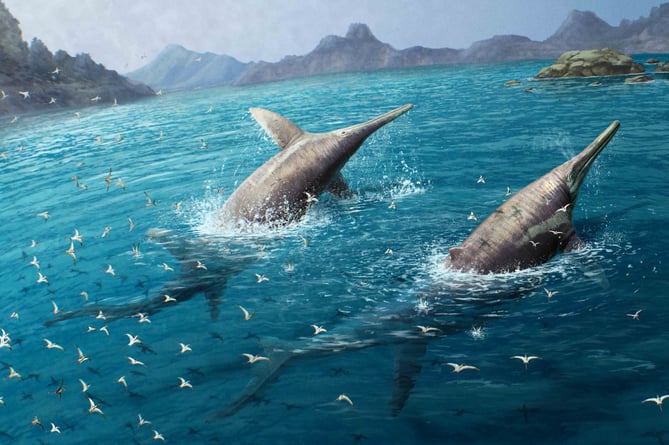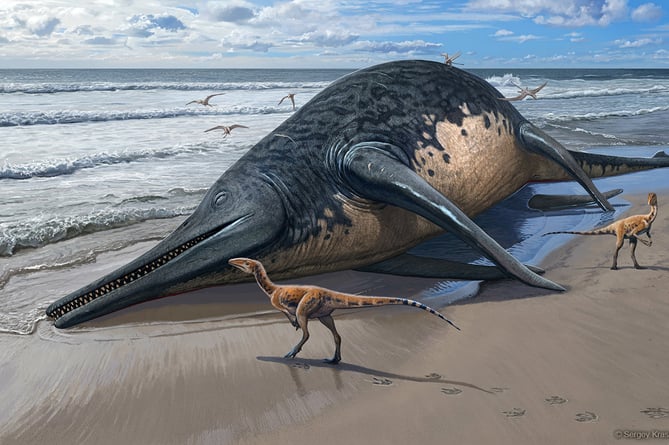FOSSILISED remains of an ichthyosaur discovered on the West Somerset coast indicate it could be the largest ever prehistoric marine reptile, University of Bristol researchers have revealed.
Experts have identified remains of a second gigantic jawbone, which measures more than two metres long, to belong to the jaws of a new species of of ichthyosaur, which is estimated to have been more than 25 metres long.
Father and daughter Justin and Ruby Reynolds, from Braunton, found the first pieces of the second jawbone in May 2020 while searching for fossils on the beach at Blue Anchor. Ruby, then 11, found the first chunk of giant bone.
Realising they had discovered something significant, they contacted leading ichthyosaur expert, Dr Dean Lomax, an 1851 Research Fellow at the University of Bristol and palaeontologist at the University of Manchester. He contacted Paul de la Salle, a seasoned fossil collector, who had found the first giant jawbone in May 2016 from the coast at Lilstock.
Dr Lomax said: “I was amazed by the find. In 2018, my team studied and described Paul’s giant jawbone and we had hoped that one day another would come to light. This new specimen is more complete, better preserved, and shows that we now have two of these giant bones (called a surangular).”
Justin said: “When Ruby and I found the first two pieces we were very excited as we realised that this was something important and unusual.”
The research team, led by Dr Lomax, revealed the jaw bones belong to a new species of giant ichthyosaur that would have been about the size of a blue whale. Having two examples of the same bone with the same features from the same time zone supports their identifications. The team have called the new genus and species Ichthyotitan severnensis, meaning “giant fish lizard of the Severn.”

The bones are around 202 million years old, dating to the end of the Triassic Period in a time known as the Rhaetian. During this time, the gigantic ichthyosaurs swam the seas while the dinosaurs walked on land. It was the titans’ final chapter, however — as the story told in the rocks above these fossils record a cataclysm known as the Late Triassic global mass extinction event.
These bones represent the last of their kind. Ichthyotitan is not the world’s first giant ichthyosaur, but de la Salles’ and Reynolds’ discoveries are unique among those known to science. These two bones appear roughly 13 million years after their latest geologic relatives.
The new research was published on Wednesday (April 17) in the open access journal PLOS ONE. Ruby, Justin and Paul’s discoveries will go on display at the Bristol Museum and Art Gallery.
Dr Lomax explained: “This research has been ongoing for almost eight years. It is quite remarkable to think that gigantic, blue whale-sized ichthyosaurs were swimming in the oceans around what was the UK during the Triassic Period. These jawbones provide tantalising evidence that perhaps one day a complete skull or skeleton of one of these giants might be found. You never know.”




